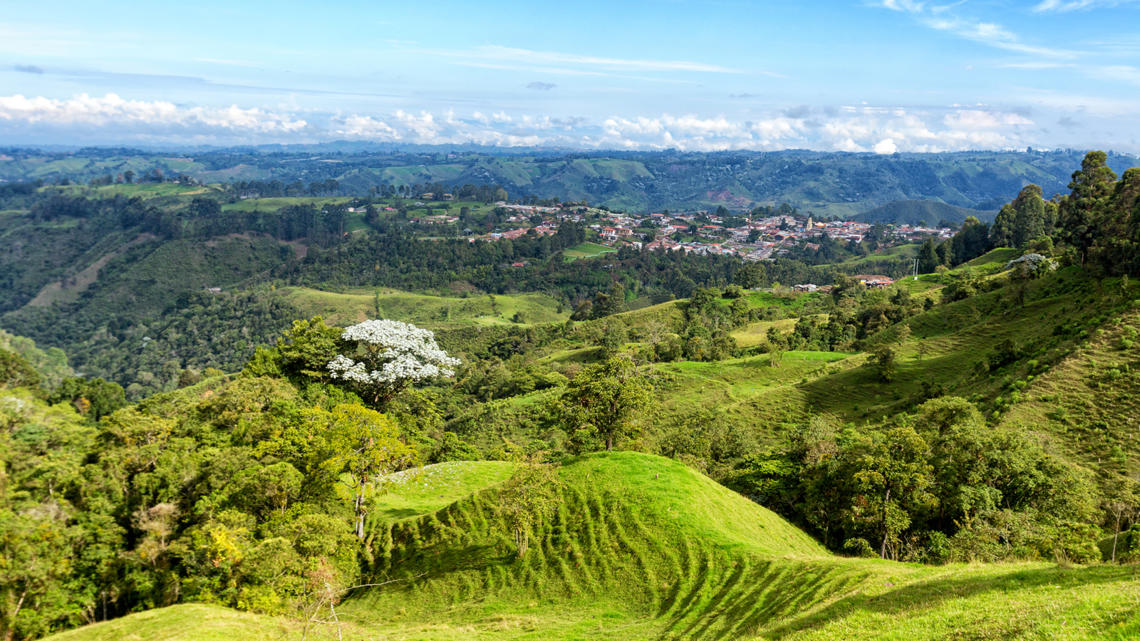This article was originally published by the Global Center on Adaptation
A new report by the United Nations Environmental Programme (UNEP) focuses on the vital role played by agricultural and food systems – responsible for 24% of global CO2 emissions – in the fight against climate change.
While it details how addressing food production and distribution could provide 20% of the mitigation needed to meet the 1.5C target by 2050, it also encourages countries to look carefully at what these sectors could contribute to climate adaptation strategies. Continuing food security rests on this transition being well-managed, warns the report: “Hundreds of millions of people depend on agriculture for subsistence and livelihoods, in particular in developing countries, and are at risk of being pushed further into poverty due to climate change.”
Offering recommendations for how to incorporate food-related policies into updated NDCs, the UNEP makes the case for adaptation as an integral pillar of a transformation that aims both to reduce emissions and build greater resilience into global food systems. UNEP makes the case for adaptation as an integral pillar of a transformation that aims both to reduce emissions and build greater resilience into global food systems.
Here are five proposals – and real-world examples – for food systems adaptation from the report:
1. Habitat resilience
Preventing further conversion of natural habitats, such as forests, savannah, peatland and wetlands, for farming obviously limits soil degradation and fosters biodiversity in those places – strengthening the biosphere on which human agriculture ultimately depends. Crucially for food systems, habitat protection also forces existing agriculture to become more efficient: by encouraging sustainable land use, and clean supply chains that don’t degrade natural environments. Countries keen to prioritize the integrity of natural habitats should also in principle consider cutting back on harmful use of synthetic fertilizers and pesticides that also threaten long-term food security. The resilience of natural environments is often also tied to successful climate adaptation in a broader sense: the Global Mangrove Alliance, for example, aims to increase global mangrove cover by 20% by 2030, pointing out these coastal buffer zones can prevent $80bn a year in flood-related losses.
2. Agroecological methods
There are numerous examples of developing agricultural techniques in closer sync with the natural world. The UAE is proving a world leader in using hydroponics and vertical farming to produce crops on otherwise arid terrain, and developing drought-resistant crop strains; methods that will be of interest elsewhere in the world as temperatures rise. In Columbia, 1m food producers are receiving “agro-climatic” information via specialized technology to help them make “climate-smart” farming decisions. Cameroonian agroforestry is a long-established way of growing crops – often cacao – in forest land without devastating natural habitats and building social resilience by diversifying rural farmers’ income. Food systems are capable of flexing to changing climatic conditions.
3. Crop diversification
Farming monocultures, reliant on a single crop, not only endanger food security – they also degrade soil quality through intensive agriculture. Diversifying crop selection can help cope with more volatile weather patterns and can be implemented in many ways: through greater crop rotation; developing local varieties that handle stressful conditions better, as on this organic farm in Segovia, Spain; intercropping different produce in proximity, including pollinator plants – a method used in much of sub-Saharan Africa. Managing the soil’s fertility in this way aids carbon storage in the earth due to better humus formation.
4. Food loss and waste
Adaptation also means making the most of what existing food systems produce. Yet the report highlights food loss and waste as neglected areas in most countries’ NDC strategies: only 11 mention food loss, and just one food waste. But lost and wasted food account for 8% of annual global GHG emissions; it is vital to implement policies that stem losses because of poor handling and storage on the processing and transportation side; and also target consumer wastage. The report singles out rice wastage as one area that puts added pressure on existing systems, particularly in Asia. Ecuador is one country campaigning for responsible consumption of agricultural produce resilient to the effects of climate change. India’s volunteer-led Robin Hood Army currently redistributes surplus food from restaurants to people in need.
5. Healthy, sustainable diets
If we can diversify produce in the fields, we can do the same on our plates. That would have an immediate feedback effect in terms of incentivizing diversified agriculture and minimizing waste – and ideally continue the drive towards plant-rich diets. This would be a major factor in adapting food systems to the realities of feeding the growing world population under climate change. The social and economic impact of healthier eating – reducing pressure on country’s health systems – can’t be underestimated. It would make $1.285 trillion available annually by 2030 and $1.92 trillion by 2050, according to the UNEP report; money that could be ploughed back into fighting the effects of climate change. Last year, the Intergovernmental Panel on Climate Change published an in-depth investigation into how various dietary changes would affect global land management.


